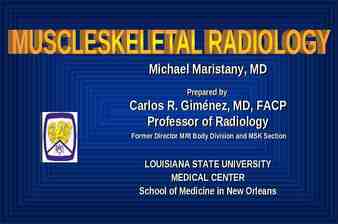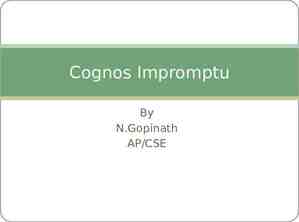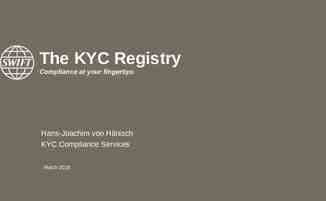AHRQ Safety Program for Improving Antibiotic Use Best Practices in
33 Slides3.87 MB

AHRQ Safety Program for Improving Antibiotic Use Best Practices in the Diagnosis and Treatment of Asymptomatic Bacteriuria and Urinary Tract Infections Acute Care AHRQ Safety Program for Improving Antibiotic Use – Acute Care AHRQ Pub. No. 17(20)-0028-EF November 2019 ASB and UTI

Objectives 1. Explain how to distinguish asymptomatic bacteriuria from a urinary tract infection (UTI). 2. Discuss the patient populations who should and should not be tested and treated for asymptomatic bacteriuria (ASB). 3. Recommend empiric treatments for UTIs. 4. Discuss opportunities for de-escalation of antibiotic therapy for UTIs after additional clinical data are available. 5. Discuss reasonable durations of antibiotic therapy for UTIs. AHRQ Safety Program for Improving Antibiotic Use – Acute Care ASB and UTI 2

The Four Moments of Antibiotic Decision Making 1. Does my patient have an infection that requires antibiotics? 2. Have I ordered appropriate cultures before starting antibiotics? What empiric therapy should I initiate? 3. A day or more has passed. Can I stop antibiotics? Can I narrow therapy or change from IV to oral therapy? 4. What duration of antibiotic therapy is needed for my patient's diagnosis? AHRQ Safety Program for Improving Antibiotic Use – Acute Care ASB and UTI 3

The Four Moments of Antibiotic Decision Making 1. Does my patient have an infection that requires antibiotics? AHRQ Safety Program for Improving Antibiotic Use – Acute Care ASB and UTI 4

Asymptomatic Bacteriuria Definition – Isolation of significant colony counts of bacteria in the urine from a person WITHOUT symptoms of a UTI. Remember: – Common symptoms of cystitis are dysuria, frequency, urgency, and suprapubic pain. – Common symptoms of pyelonephritis are fever and flank pain. – Common symptoms of catheter-associated UTI are fever and suprapubic tenderness. – Foul-smelling or cloudy urine does not indicate a UTI. – Mental status changes alone do not indicate a UTI. – Pyuria can be seen in patients with a UTI but is not diagnostic of a UTI in the absence of urinary symptoms. AHRQ Safety Program for Improving Antibiotic Use – Acute Care ASB and UTI 5

Asymptomatic Bacteriuria, Continued Asymptomatic bacteriuria is COMMON.1-4 Population Healthy premenopausal women Women 70–90 years old Female long-term care residents Male long-term care residents Females with diabetes Males with diabetes People receiving hemodialysis People with long-term indwelling urinary catheters AHRQ Safety Program for Improving Antibiotic Use – Acute Care Prevalence 1–5% 11–16% 25–50% 15–50% 9–29% 1–11% 25% 90% ASB and UTI 6

Asymptomatic Pyuria Pyuria is COMMON in patients with ASB.5 Population With ASB Young women Pregnant women Women with diabetes Elderly institutionalized patients Dialysis patients Patients with short-term catheters Patients with long-term catheters Prevalence of Pyuria 32% 30–70% 70% 90% 90% 30–75% 50–100% Pyuria in patients with asymptomatic bacteriuria is not an indication for antibiotic therapy. Other causes of pyuria to consider: sexually transmitted infections and interstitial nephritis. AHRQ Safety Program for Improving Antibiotic Use – Acute Care ASB and UTI 7

Treatment of ASB Is Not Beneficial Randomized, controlled trials have demonstrated a LACK of benefit of antibiotic treatment of ASB in the following populations:6-13 ̶ Healthy, nonpregnant women aged 18–40 years ̶ Diabetic women ̶ Patients with long-term indwelling catheters ̶ Older women in the community ̶ Elderly nursing home residents ̶ Renal transplant patients ̶ Patients undergoing orthopedic surgery AHRQ Safety Program for Improving Antibiotic Use – Acute Care ASB and UTI 8

Treatment of ASB May Cause Harm 6-9, 14 Treatment is associated with— – Adverse events and development of resistance – An increased risk of subsequent UTIs AHRQ Safety Program for Improving Antibiotic Use – Acute Care ASB and UTI 9

Mental Status Changes, ASB, and UTI 15-17 Bacteriuria and delirium are both independently common in the elderly. Although patients with a symptomatic UTI may present with delirium, no evidence suggests that delirium, falls, or confusion are symptoms of a UTI in the absence of urinary symptoms. Asymptomatic bacteriuria is not associated with a decreased feeling of well-being. ̶ 72 elderly residents without traditional UTI symptoms with and without ASB detected in their urine specimens over a 1-year period ̶ No differences in insomnia, malaise, fatigue, weakness, or anorexia in the presence or absence of ASB If a patient has signs of systemic infection and delirium, empiric antibiotic therapy may be warranted. AHRQ Safety Program for Improving Antibiotic Use – Acute Care ASB and UTI 10

When Is Screening/Treating for ASB Indicated? Guidelines recommend screening and treating for ASB in two situations1 1. Pregnant women at 12–16 weeks gestation Prevents pyelonephritis, preterm labor, and infant low birth weight 2. Impending urologic procedure in which mucosal bleeding is expected May prevent urosepsis This does not include placement of a urinary catheter AHRQ Safety Program for Improving Antibiotic Use – Acute Care ASB and UTI 11

Can I Follow the Same Rules for Candiduria? 10% of urine cultures in hospitalized patients grow Candida species. Multicenter placebo-controlled trial of fluconazole in patients with Candida in two consecutive urine cultures who were asymptomatic (95%) or minimally symptomatic (5%).18 – Fluconazole eradicated candiduria in 2/3. – 1/3 had eradication with no therapy. – Two weeks after completion of fluconazole, Candida grew in 2/3 of urine cultures in both the fluconazole and placebo groups. – 56% of patients had catheters—urine cultures had to grow Candida after the catheter had been removed. – No patients developed pyelonephritis or candidemia. AHRQ Safety Program for Improving Antibiotic Use – Acute Care ASB and UTI 12

The Four Moments of Antibiotic Decision Making 1. Does my patient have an infection that requires antibiotics? 2. Have I ordered appropriate cultures before starting antibiotics? What empiric therapy should I initiate? 3. A day or more has passed. Can I stop antibiotics? Can I narrow therapy or change from IV to oral therapy? 4. What duration of antibiotic therapy is needed for my patient's diagnosis? AHRQ Safety Program for Improving Antibiotic Use – Acute Care ASB and UTI 13

Moment 2: Urinalysis and Cultures Send urinalysis (UA) and urine cultures when patients have symptoms of UTI Do not send urine cultures for— ̶ ̶ ̶ ̶ Foul-smelling or cloudy urine Routinely on admission or preoperatively Routinely before or after a catheter change As part of a fever workup if there are no signs or symptoms localizing to the urinary tract ̶ As a test of cure Ensure that urine cultures are collected correctly AHRQ Safety Program for Improving Antibiotic Use – Acute Care ASB and UTI 14

Moment 2: Urinalysis and Cultures, Continued 1, 19-20 Positive UA ̶ 10 WBC per high-power field (hpf) ̶ Leukocyte esterase indicates presence of WBCs ̶ Nitrites indicate bacteria in urine Positive urine culture ̶ No catheter: 10,000–100,000 cfu/mL of a urinary pathogen ̶ Catheter: 1,000 cfu/mL of a urinary pathogen Obtain blood cultures when you suspect pyelonephritis or urosepsis AHRQ Safety Program for Improving Antibiotic Use – Acute Care ASB and UTI 15

Uncomplicated Cystitis Moment 2: Empiric therapy21 ̶ Oral therapy is preferred o Avoid giving ceftriaxone or other IV options just because the patient is hospitalized ̶ Avoid fluoroquinolones o No longer first-line therapy in guidelines due to resistance and side effects ̶ Options to consider o First-line recommendations Nitrofurantoin Trimethoprim/sulfamethoxazole (TMP/SMX) (check local resistance data) o Second-line options Oral cephalosporins ̶ For any UTI, look at prior urine culture information to guide empiric therapy. AHRQ Safety Program for Improving Antibiotic Use – Acute Care ASB and UTI 16

Uncomplicated Cystitis, Continued Moment 3: De-escalation and IV to PO conversion21 ̶ Patients should be treated for 3–5 days with relatively narrowspectrum agents, so there is not often an opportunity to deescalate. ̶ If you started therapy for cystitis and subsequently determined an alternative diagnosis, stop antibiotics. Moment 4: Duration Drug Duration Studied Nitrofurantoin 5 days TMP/SMX 3 days Cefaclor 5 days Cefpodoxime 3 days Cephalexin 7 days Cefdinir 5 days AHRQ Safety Program for Improving Antibiotic Use – Acute Care ASB and UTI 17

Pyelonephritis 22-25 Moment 2: Empiric therapy – Fluoroquinolones or TMP/SMX are preferred given excellent penetration into kidney. Can be given orally, given excellent bioavailability. Must consider local E. coli resistance data as not recommended for empiric therapy if resistance is seen in greater than 20% of isolates. – Second-line therapy Ceftriaxone Severe PCN allergy: – Gentamicin, aztreonam AHRQ Safety Program for Improving Antibiotic Use – Acute Care ASB and UTI 18

Pyelonephritis, Continued Moment 3: De-escalation and IV to PO conversion – If susceptible to fluoroquinolones or TMP/SMX, continue or convert to these agents and give orally. – If resistant to these agents, consider an oral cephalosporin. Moment 4: Duration – Fluoroquinolones: 5–7 days total therapy – TMP/SMX: 10–14 days total therapy – Oral cephalosporin: 10–14 days total therapy AHRQ Safety Program for Improving Antibiotic Use – Acute Care ASB and UTI 19

Catheter-Associated UTI 20 Moment 2: Urinalysis and culture – Same general approach as with non-CAUTI For patients with chronic catheters, catheter should be removed before cultures are obtained. Patients often have pyuria in the absence of CAUTI. Positive urine culture: 1000 CFU/mL of a urinary pathogen. Moment 2: Empiric therapy – Remove the catheter whenever possible. – Empiric therapy based on severity of illness, location of infection (upper vs. lower tract), and information from prior urine cultures if available. AHRQ Safety Program for Improving Antibiotic Use – Acute Care ASB and UTI 20

Catheter-Associated UTI, Continued 20 Moment 3: De-escalation and IV to PO conversion – If susceptible to TMP/SMX can continue or convert to it and give orally – If treating severe infection, can consider oral ciprofloxacin or levofloxacin Avoid for uncomplicated infections given side effects – If resistant to these agents, consider an oral cephalosporin Moment 4: Duration – If catheter removed in a female patient 65 years and no upper tract disease: 3 days26 – Prompt resolution of symptoms: 7 days – Delayed response or obstruction: 10–14 days AHRQ Safety Program for Improving Antibiotic Use – Acute Care ASB and UTI 21

UTI in Males UTIs in the absence of a urinary catheter in men are considered complicated because they are usually associated with obstructive pathology such as— – Renal stones – Strictures – Enlarged prostate In the absence of these risk factors, UTI is a rare diagnosis in males. Other causes of urinary symptoms in males: prostatitis, epididymitis, sexually transmitted infections. AHRQ Safety Program for Improving Antibiotic Use – Acute Care ASB and UTI 22

Other Complicated UTIs Includes UTIs occurring in the presence of urologic abnormalities such as those described on the previous slide and UTIs in pregnancy. Management of the underlying associated process must also occur whenever possible (e.g., relief of obstruction via nephrostomy tubes, stents, transuretheral resection of the prostate). As with CAUTI, antibiotic selection depends on the extent of infection and the severity of illness of the patient. Duration of therapy is based on the clinical response of the patient and the timing of relief of the inciting process. – Prompt resolution of symptoms and resolution of the underlying abnormality: 7 days of therapy – Delayed response or persistent obstruction: a longer course (e.g., 10–14 days) AHRQ Safety Program for Improving Antibiotic Use – Acute Care ASB and UTI 23

Improving Prescribing for ASB and UTI at Your Hospital Interventions can occur both at the time a urine culture is ordered and after urine culture results are available AHRQ Safety Program for Improving Antibiotic Use – Acute Care ASB and UTI 24

Urine Culture Ordering Stewardship Do not order in the absence of signs and symptoms of UTI, including patients with urinary catheters and those undergoing preoperative evaluation (unless urinary mucosal bleeding anticipated). Work with lab to determine from where and why urine cultures are being sent to identify targets for improvement. Consider reflex testing protocols with the lab. Develop tools in the EHR to prompt providers to document indication for sending a urine culture. AHRQ Safety Program for Improving Antibiotic Use – Acute Care ASB and UTI 25

Positive Urine Culture Stewardship Ask the patient if he or she is having urinary symptoms before initiating antibiotics. Ask colleagues why the urine culture was sent (was there a suspicion for UTI at some point?). Develop and follow guidelines for treatment and deescalation. AHRQ Safety Program for Improving Antibiotic Use – Acute Care ASB and UTI 26

Take-Home Messages Send urine cultures only when you suspect UTI based on clinical symptoms. Asymptomatic bacteriuria is common particularly in older people and should not be treated in the vast majority of patients. Uncomplicated cystitis should be treated with a short course of an oral antibiotic. UTIs in men are rare in the absence of urinary tract pathology. Seven-day courses of therapy work for uncomplicated pyelonephritis if you can use a fluoroquinolone, but increasing rates of E. coli that are resistant to these agents is of concern in many parts of the United States. There are many opportunities for stewardship in improving when urine cultures are sent, nontreatment of ASB, and optimization of UTI therapy. AHRQ Safety Program for Improving Antibiotic Use – Acute Care ASB and UTI 27

Disclaimer The findings and recommendations in this presentation are those of the authors, who are responsible for its content, and do not necessarily represent the views of AHRQ. No statement in this presentation should be construed as an official position of AHRQ or of the U.S. Department of Health and Human Services. Any practice described in this presentation must be applied by health care practitioners in accordance with professional judgment and standards of care in regard to the unique circumstances that may apply in each situation they encounter. These practices are offered as helpful options for consideration by health care practitioners, not as guidelines. AHRQ Safety Program for Improving Antibiotic Use – Acute Care ASB and UTI

References 1. Nicolle LE, Gupta K, Bradley SF, et al. Clinical practice guideline for the management of asymptomatic bacteriuria: 2019 update by the Infectious Diseases Society of America. Clin Infect Dis. 2019 Mar 21. [Epub ahead of print]. PMID: 30895288. 2. Taweel I, Beatty N, Duarte A, et al. Significance of bacteriuria in patients with endstage renal disease on hemodialysis. Avicenna J Med. 2018 Apr-Jun;8(2):51-4. PMID: 29682478. 3. Warren JW, Tenney JH, Hoopes JM, et al. A prospective microbiologic study of bacteriuria in patients with chronic indwelling urethral catheters. J Infect Dis. 1982 Dec;146(6):719-23. PMID: 6815281. 4. Zhanel GG, Harding GK, Nicolle LE. Asymptomatic bacteriuria in patients with diabetes mellitus. Rev Infect Dis. 1991 Jan-Feb;13(1):150-4. PMID: 2017615. 5. Nicolle LE, Bradley S, Colgan R, et al. Infectious Diseases Society of America guidelines for the diagnosis and treatment of asymptomatic bacteriuria in adults. Clin Infect Dis. 2005 Mar 1;40(5):643-54. PMID: 15714408. 6. Cai T, Mazzoli S, Mondaini N, et al. The role of asymptomatic bacteriuria in young women with recurrent urinary tract infections: to treat or not to treat? Clin Infect Dis. 2012 Sep;55(6):771-7. PMID: 22677710. AHRQ Safety Program for Improving Antibiotic Use – Acute Care ASB and UTI 29

References 7. Harding GK, Zhanel GG, Nicolle LE, et al. Antimicrobial treatment in diabetic women with asymptomatic bacteriuria. N Engl J Med. 2002 Nov 14;347(20):1576-83. PMID: 12432044. 8. Warren JW, Anthony WC, Hoopes JM, et al. Cephalexin for susceptible bacteriuria in afebrile, long-term catheterized patients. JAMA. 1982 Jul 23;248(4):454-8. PMID: 7045440. 9. Nicolle LE, Mayhew WJ, Bryan L. Prospective randomized comparison of therapy and no therapy for asymptomatic bacteriuria in institutionalized elderly women. Am J Med. 1987 Jul;83(1):27-33. PMID: 3300325. 10.Boscia JA, Kobasa WD, Knight RA, et al. Therapy vs no therapy for bacteriuria in elderly ambulatory nonhospitalized women. JAMA. 1987 Feb 27;257(8):1067-71. PMID: 3806896. 11.Nicolle LE, Bjornson J, Harding GK, et al. Bacteriuria in elderly institutionalized men. N Engl J Med. 1983 Dec 8;309(23):1420-5. PMID: 6633618. 12.Origüen J, López-Medrano F, Fernández-Ruiz M, et al. Should asymptomatic bacteriuria be systematically treated in kidney transplant recipients? Results from a randomized controlled trial. Am J Transplant. 2016 Oct;16(10):2943-53. PMID: 27088545. AHRQ Safety Program for Improving Antibiotic Use – Acute Care ASB and UTI

References 13.Cordero-Ampuero J, González-Fernández E, Martínez-Vélez D, et al. Are antibiotics necessary in hip arthroplasty with asymptomatic bacteriuria? Seeding risk with/without treatment. Clin Orthop Relat Res. 2013 Dec;471(12):3822-9. PMID: 23430723. 14.Cai T, Nesi G, Mazzoli S, et al. Asymptomatic bacteriuria treatment is associated with a higher prevalence of antibiotic resistant strains in women with urinary tract infections. Clin Infect Dis. 2015 Dec 1;61(11):1655-61. PMID: 26270684. 15.McKenzie R, Stewart MT, Bellantoni MF, et al. Bacteriuria in individuals who become delirious. Am J Med. 2014 Apr;127(4):255-7. PMID: 24439075. 16.Boscia JA, Kobasa WD, Abrutyn E, et al. Lack of association between bacteriuria and symptoms in the elderly. Am J Med. 1986 Dec;81(6):97982. PMID: 3799658. 17.Nicolle LE, Bentley DW, Garibaldi R, et al. Antimicrobial use in long-termcare facilities. SHEA Long-Term-Care Committee. Infect Control Hosp Epidemiol. 2000 Aug;21(8):537-45. PMID: 10968724. AHRQ Safety Program for Improving Antibiotic Use – Acute Care ASB and UTI 31

References 18.Sobel JD, Kauffman CA, McKinsey D, et al. Candiduria: a randomized, double-blind study of treatment with fluconazole and placebo. The National Institute of Allergy and Infectious Diseases (NIAID) Mycoses Study Group. Clin Infect Dis. 2000 Jan;30(1):19-24. PMID: 10619727. 19.Johnson JR, Russo TA. Acute pyelonephritis in adults. N Engl J Med. 2018 Jan;378:48-59. PMID: 29298155. 20.Hooton T, Bradley SF, Cardenas, et al. Diagnosis, prevention, and treatment of catheterassociated urinary tract infection in Adults: 2009 International Clinical Practice Guidelines from the Infectious Diseases Society of America. Clin Infectious Dis. 2010 Mar;50(5):625–63. PMID: 20175247. 21.Gupta K, Hooton TM, Naber KG, et al. International clinical practice guidelines for the treatment of acute uncomplicated cystitis and pyelonephritis in women: A 2010 update by the Infectious Diseases Society of America and the European Society for Microbiology and Infectious Diseases. Clin Infect Dis. 2011 Mar 1;52(5):e103-20. PMID: 21292654. 22.Talan DA, Stamm WE, Hooton TM, et al. Comparison of ciprofloxacin (7 days) and trimethoprim-sulfamethoxazole (14 days) for acute uncomplicated pyelonephritis in women: a randomized trial. JAMA. 2000 Mar 22-29;283(12):1583-90. PMID: 10735395. AHRQ Safety Program for Improving Antibiotic Use – Acute Care ASB and UTI 32

References 23.Sandberg T, Skoog G, Hermansson AB, et al. Ciprofloxacin for 7 days versus 14 days in women with acute pyelonephritis: a randomised, open-label and double-blind, placebo-controlled, non-inferiority trial. Lancet. 2012 Aug 4;380(9840):484-90. PMID: 22726802. 24.Talan DA, Klimberg IW, Nicolle LE, et al. Once daily, extended release ciprofloxacin for complicated urinary tract infections and acute uncomplicated pyelonephritis. J Urol. 2004 Feb;171(2 Pt 1):734-9. PMID: 14713799. 25.Peterson J, Kaul S, Khashab M, et al. A double-blind, randomized comparison of levofloxacin 750 mg once-daily for five days with ciprofloxacin 400/500 mg twice-daily for 10 days for the treatment of complicated urinary tract infections and acute pyelonephritis. Urology. 2008 Jan;71(1):17-22. PMID: 18242357. 26.Harding GK, Nicolle LE, Ronald AR, et al. How long should catheteracquired urinary tract infection in women be treated? A randomized controlled study. Ann Intern Med. 1991 May 1;114(9):713-9. PMID: 2012351. AHRQ Safety Program for Improving Antibiotic Use – Acute Care ASB and UTI 33






